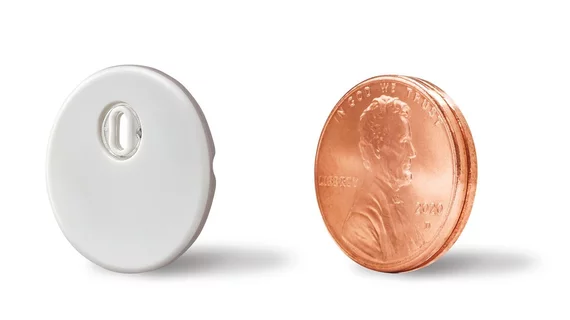Regulatory Roundup: FDA clears 2 new devices, grants breakthrough designation to advanced AI model
The U.S. Food and Drug Administration (FDA) has been busy in recent weeks, pushing for menthol cigarettes to be prohibited and tracking multiple, significant recalls. There have also been several key announcements during that time that cardiologists may have missed.
Abbott’s FreeStyle Libre 3 glucose monitor gains FDA clearance
The FreeStyle Libre 3 system from Abbott, a 14-day continuous glucose monitor that sends updates straight to the user’s smartphone every minute, has now been cleared by the FDA.
The device, already available in many other parts of the world, is now approved in the United States for diabetes patients age 4 and older. It is roughly the size of two pennies stacked on top of one another, and users wear it on the back of their upper arm.
“The FreeStyle Libre 3 system is a direct result of listening to our customers — and giving them the innovation and sensing technology they've been looking for,” Jared Watkin, senior vice president of Abbott's diabetes care business, said in a statement.
The device also includes Bluetooth integration that lasts up to 33 feet, and Abbott described it as “the world’s smallest and thinnest sensor.”
ŌNŌCOR’s ŌNŌ retrieval system gains FDA clearance
Ōnocor, a U.S. healthcare startup with roots in the Penn Center for Innovation, has gained FDA clearance for its Ōno retrieval system, which helps clinicians remove devices from a patient’s vascular system.
The new solution was designed with such interventional procedures as patent foramen ovale (PFO) closure and left atrial appendage (LAA) occlusion in mind. It gives specialists an effective way to remove any “wayward devices” before they make a negative impact on patient outcomes.
“I’ve watched the scope and complexity of endovascular devices and procedures increase rapidly over the last 20 years and have been struck by the absence of an equal advancement in rescue technologies,” Matthew J. Gillespie, MD, Ōnocor co-founder, said in a statement. “The Ōno was invented to help interventionalists ensure the promise of safety that they make to their patients on a daily basis.”
Anumana’s ECG-based AI model for pulmonary hypertension receives breakthrough device designation
Anumana, a healthcare technology company focused on artificial intelligence (AI) solutions, has received the FDA’s breakthrough device designation for an AI model designed to detect signs of pulmonary hypertension (PH) in electrocardiogram (ECG) results. This designation from the FDA helps speed up the approval process for certain devices.
The advanced algorithm represents a collaboration between Anumana, Janssen Research and Development and Mayo Clinic. It “reads” 12-lead ECGs and, within seconds, predicts the patient’s likelihood of developing PH.
If approved by the FDA, the algorithm would be available as a download for physicians, allowing them to access it with their smartphone, tablet or computer.
“Early diagnosis of pulmonary hypertension is paramount due to its progression and potential severity,” said Paul Friedman, MD, chair of the department of cardiovascular medicine at Mayo Clinic. “The addition of AI to a standard ECG — a painless, inexpensive, widely used test that is routinely performed — transforms the ECG into a screening tool for PH, with the opportunity to improve outcomes via early detection by guiding appropriate testing.”
FDA now working to ‘return to normal’
According to a recent update from the FDA’s Center for Devices and Radiological Health (CDRH), the pandemic’s impact is still being felt by regulators throughout the agency.
“Since the beginning of the COVID-19 pandemic, the demand for medical devices has far exceeded anything we have seen in previous public health emergencies,” according to the statement. “The FDA’s CDRH has worked to address these unprecedented demands, while continuing to fulfill our mission to protect public health and facilitate medical device innovation. However, the significant increase in workload has adversely impacted our premarket review times for both COVID and non-COVID medical devices and our ability to meet all requests for pre-submission meetings.”
The CDRH has responded to this increased workload by hiring more employees. The FDA said that additional funding from the U.S. government has also helped the agency push forward through this busy time.
“We look forward to our continued interactions with device submission sponsors and appreciate your patience and understanding as we work to return to normal operations while continuing to respond to the public health emergency,” according to the FDA’s update.
Related FDA Content:
FDA announces Class I recall of 4,800 imaging catheters due to risk of vascular injury
FDA Roundup: AAA EVAR recommendations, key approvals in stroke care and interventional cardiology

